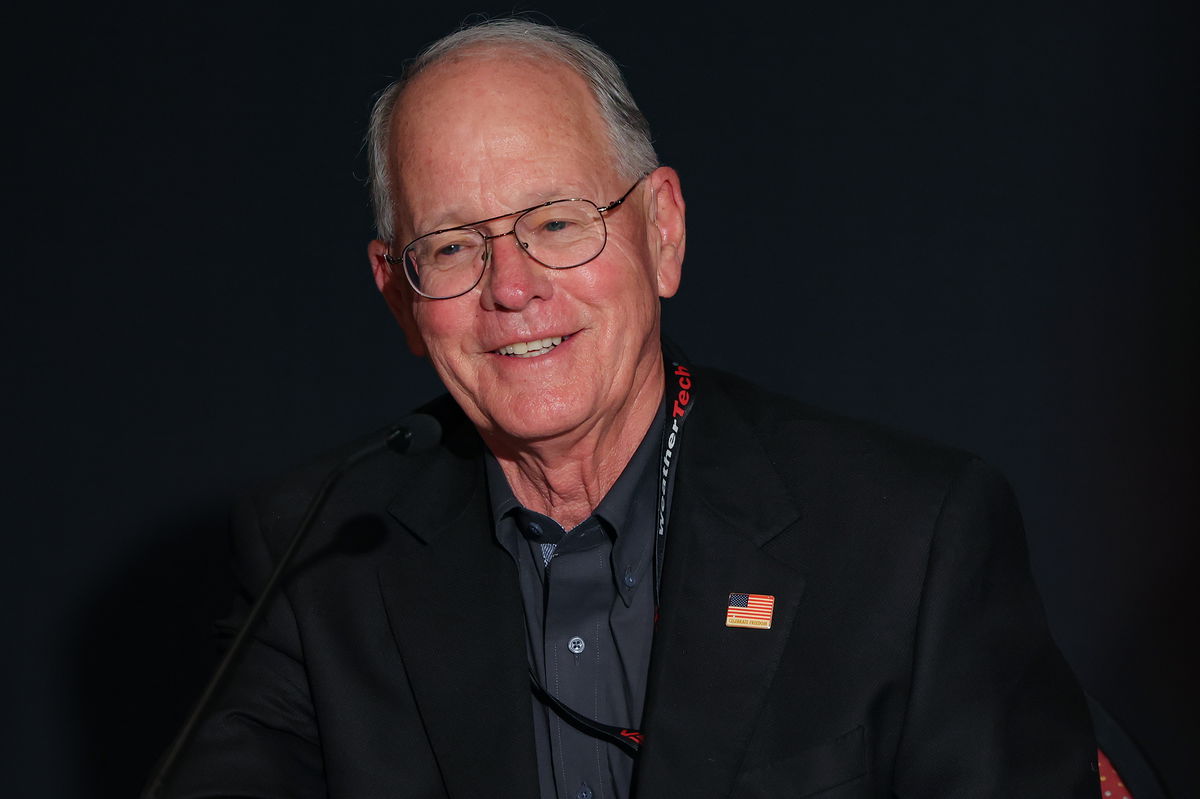
Getty
SEBRING, FLORIDA – MARCH 17: NASCAR and IMSA Chairman Jim France looks on during the NASCAR, IMSA, and Hendrick Motorsports press conference for the Garage 56 entry at the 2023 24 Hours of Le Mans announcement at Sebring International Raceway on March 17, 2022 in Sebring, Florida. (Photo by Sam Greenwood/Getty Images)

Getty
SEBRING, FLORIDA – MARCH 17: NASCAR and IMSA Chairman Jim France looks on during the NASCAR, IMSA, and Hendrick Motorsports press conference for the Garage 56 entry at the 2023 24 Hours of Le Mans announcement at Sebring International Raceway on March 17, 2022 in Sebring, Florida. (Photo by Sam Greenwood/Getty Images)
A flash of sun over Daytona Beach in 1969 saw Bill France Sr. partner with John Bishop to give sports-car racing its own arena, birthing IMSA, with France financing 75 percent and Bishop managing the fledgling series. What started as a tiny race featuring just 328 enthusiastic fans grew into the powerhouse IMSA it is today, eventually becoming the sanctioning body for the WeatherTech SportsCar Championship, all under the umbrella of NASCAR ownership and guided by the France lineage steered by current chairman Jim France. And that deep well of heritage is exactly what fuels IMSA’s drive into the modern age of storytelling.
Watch What’s Trending Now!
IMSA’s YouTube channel now boasts over one million subscribers, placing it second only to NASCAR among U.S. Series, while social media channels collectively boast nearly 2.7 million followers, a 126 percent jump this year, and more than 20 million engagements. Meanwhile, the Rolex 24 at Daytona set records online with over 2.93 million live and on-demand views, 131,520 peak concurrent viewers, and countless chat messages during the broadcast. But this surge is also supercharged by a recent Hollywood success, which has unexpectedly pushed IMSA into the spotlight of global motorsports fans.
ADVERTISEMENT
IMSA rides the Hollywood wave to wider recognition
NASCAR Holdings’ IMSA sports car property has found itself in the international spotlight thanks to its prominent role in F1 The Movie, a blockbuster that has grossed over $615 million worldwide. The film’s plot follows Sonny Hayes, a fictional former F1 driver played by Brad Pitt, who finds a path back to the grid after competing in sports car racing at IMSA’s flagship event, the Rolex 24 Hours at Daytona International Speedway.
IMSA President John Doonan believes the film’s success will be a “huge benefit” for the series, not just in terms of exposure but also in cementing sports car racing’s role as a vital part of motorsport’s storytelling. Doonan noted that the response to IMSA’s inclusion has been “incredibly positive, especially from our community and just anecdotally, messages I received from friends in the industry who have gone to see it.”
The film’s authenticity comes in large part from director Joseph Kosinski and co-producer Lewis Hamilton, who ensured the storyline reflected real-world motorsport dynamics. In a video posted on Porsche’s official YouTube page, Kosinski revealed that Hamilton “felt that endurance racing would be a great place for Sonny Hayes to be found” at the start of the story. This choice carried weight, since open-wheel drivers often transition into sports cars at the later stages of their careers. The Rolex 24 Hours at Daytona was an ideal backdrop, blending real-world racing tradition with cinematic drama. It not only gave the story credibility but also introduced IMSA to millions of fans who might never have tuned into a sports car event otherwise.
ADVERTISEMENT
The numbers back up that exposure. By August, Expensify reported that 40 million people had already watched the film, making it the sixth-best performer of any global release in 2025. IMSA itself may not have been able to quantify the impact on ticket sales, but its social media activity around the film told its own story: more than 138,000 engagements, 1.45 million video views, and a reach of 6.7 million accounts. While Google Trends data didn’t show a massive spike around the movie’s release, IMSA searches did reach an all-time high in January, perfectly timed with the Rolex 24. This shows how the buzz generated by the movie helped overlap with IMSA’s own tentpole, creating the kind of brand reinforcement that money couldn’t buy.
NASCAR Holdings’ @IMSA sports car property has received significant exposure from playing a key role in “F1 The Movie,” and IMSA President John Doonan hopes it will serve as a “huge benefit” for the series moving forward. https://t.co/hvKW6MLGrm
— Adam Stern (@A_S12) September 5, 2025
ADVERTISEMENT
The film’s production also benefited from IMSA’s willingness to collaborate. Kosinski and his team scouted the Rolex 24 in 2023, then filmed extensively during and after the 2024 edition of the race. IMSA allowed scenes to be captured in the middle of real competition and opened up the track after the race for more intricate shots. A key element was Apple’s Wright Motorsports. Rebranded as Chip Hart Racing for the film, the car seamlessly tied together the fictional story and the authentic race footage. IMSA and Daytona both used their platforms to amplify the crossover, ensuring fans were aware of the sport’s starring role on the big screen.
For Doonan, moments like Brad Pitt performing how own burnout on the pit lane were more than just movie magic, they were a chance to spotlight endurance racing to an entirely new demographic. “When it came time for Brad Pitt to do a burnout from a pit stop, he did that himself, like that was him driving for real, so we notified of course the entire community about what was going on, and everybody I think was like us at IMSA just thrilled to have the opportunity that our form of racing could get highlighted,” Doonan said. He added, “IMSA content being in a movie like that I think only does one thing and that puts our brand, our form of racing, in front of a broader audience. We’ve got a really good story to tell, and the more people who get a taste of it is a huge benefit to us as a sanctioning body.” As the credits roll on Hollywood’s latest hit, the real face of NASCAR’s future influence and expansion may just be beginning.
Top Stories
‘RIP’: NASCAR World Crumbles in Tears as 39-YO Former JR Motorsports Driver Passes Away
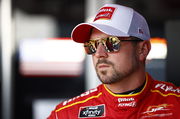
31-YO NASCAR Cup Team Joins Hands With Richard Childress to Leave Ford Alliance After 2025 Reality Check
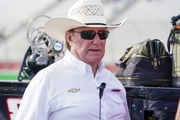
Courtroom Falls into Dead Silence as Heather Gibbs’ Heart-Ripping Account of Husband Coy’s Death Stuns the Trial

EXCLUSIVE: Kyle Petty: NASCAR’s Renaissance Man
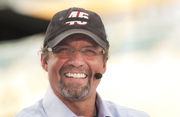
Michael Jordan Exposes NASCAR’s Harsh Reality as Jim France & Family Faces Uncomfortable Questions
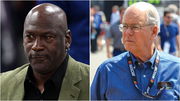
ADVERTISEMENT
NASCAR star says ‘Talladega Night’ did NASCAR no favors
While F1 The Movie has been riding high in the NASCAR community, Kyle Larson, fresh off another season as one of NASCAR’s most dominant forces, joined Julian Edelman and Sam Morrill on the Games With Names podcast in August, criticizing NASCAR’s own popular hit. When the hosts brought up Talladega Night: The Ballad of Ricky Bobby, Larson’s response was cautious but candid: “I mean I like the movie. I think it did not do anything good for our sport. I think it turned our sport into like a joke unfortunately. But I mean that’s got to be one of the most popular race movies.”
Edelman jumped in to defend the Will Ferrell comedy. “It’s just a funny comedy with those boys,” he said, but Larson didn’t back down: “Yeah. But just the rest of the world, like that’s what they think about our sport now.” The back-and-forth turned lighthearted as Edelman reminisced, “I still think of one of the hottest short men of all time getting pulled over by some really smoke-show scene after winning the Daytona 500. Yeah, that’s what I think of. The coolest.” Larson laughed along, replying, “That might be one of the best movie scenes in the history of movies, dude.”
The conversation eventually shifted from parody to legacy, as Larson revealed a surprising update from Hendrick Motorsports boss Jeff Gordon. “He is good friends with Tom and he went to … the premiere or whatever of ‘Mission Impossible,'” Larson shared. “When [Gordon saw] Tom, he’s like, ‘We’re doing it. We got to do another ‘Days of Thunder.’ So, let’s go.” If Larson’s comments are any indication, NASCAR’s cinematic future may soon swing back from comedy to the cult-classic drama that first put the sport on Hollywood’s radar.
ADVERTISEMENT
ADVERTISEMENT
ADVERTISEMENT
ADVERTISEMENT

